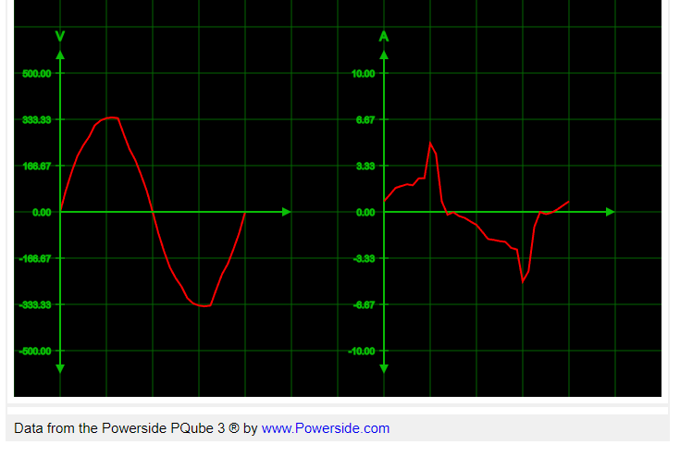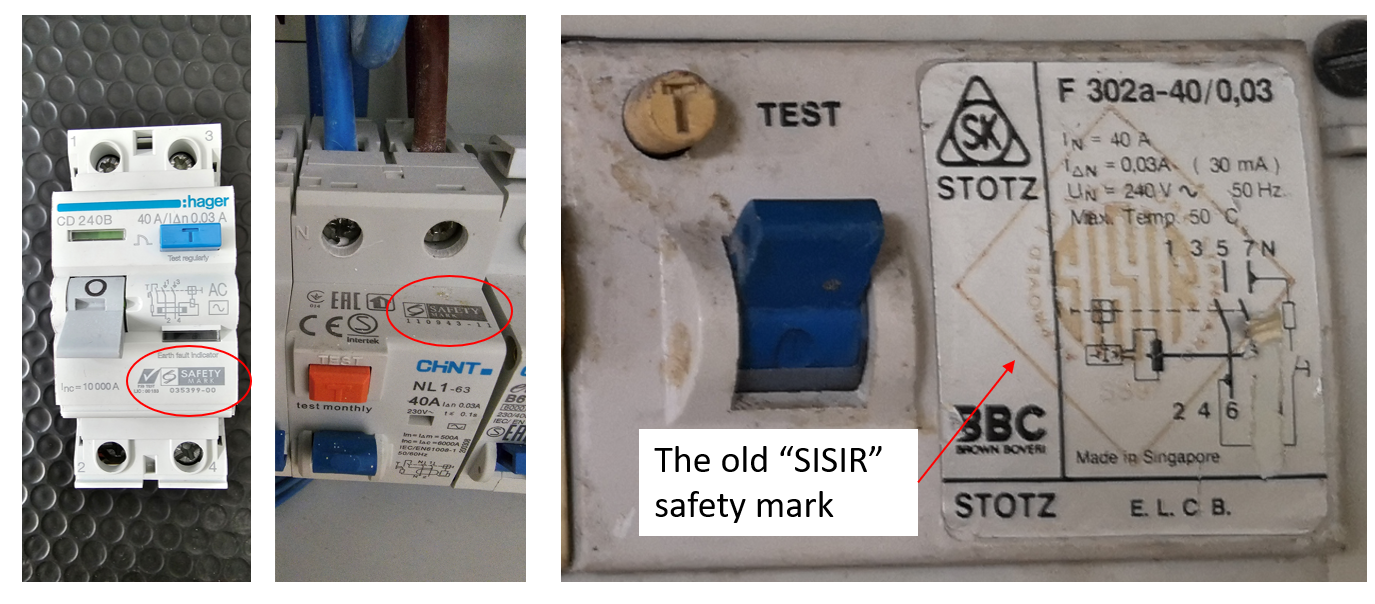On 12 May 2023, the regulator Energy Market Authority (EMA) issued a circular that w.e.f 1/7/2023, all residential premises will be required to have a Residual Current Circuit Breaker (RCCB) installed. A two-year grace period is given. This circular was targeted to homes built in or before July 1985, as this RCCB requirement is already been in place since 1 July 1985.
Finer Points of this RCCB requirement
1. It refers to the 30mA sensitivity RCCB, meant for protection of socket outlets and lighting circuits.
2. The 30mA RCCB is a “Controlled Item”. In short, one should look out for the “Safety Mark”. Refer to Enterprise Singapore website for more details.
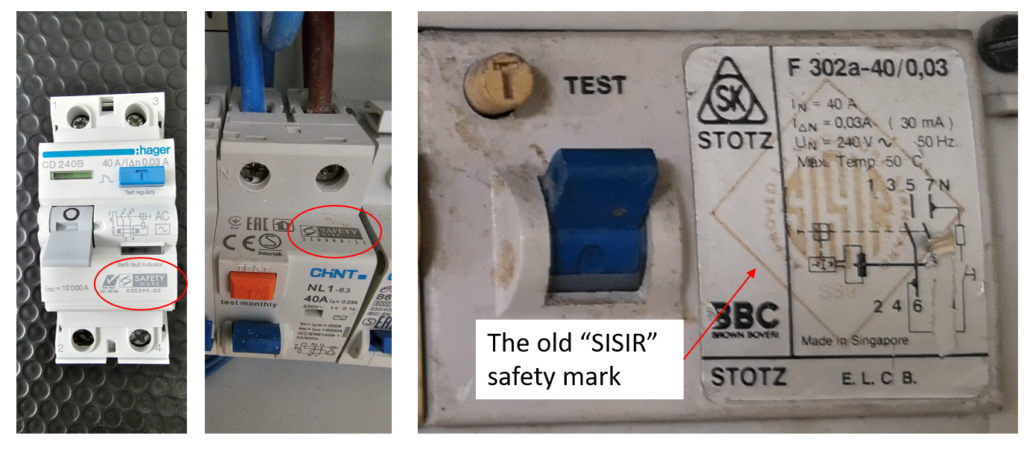
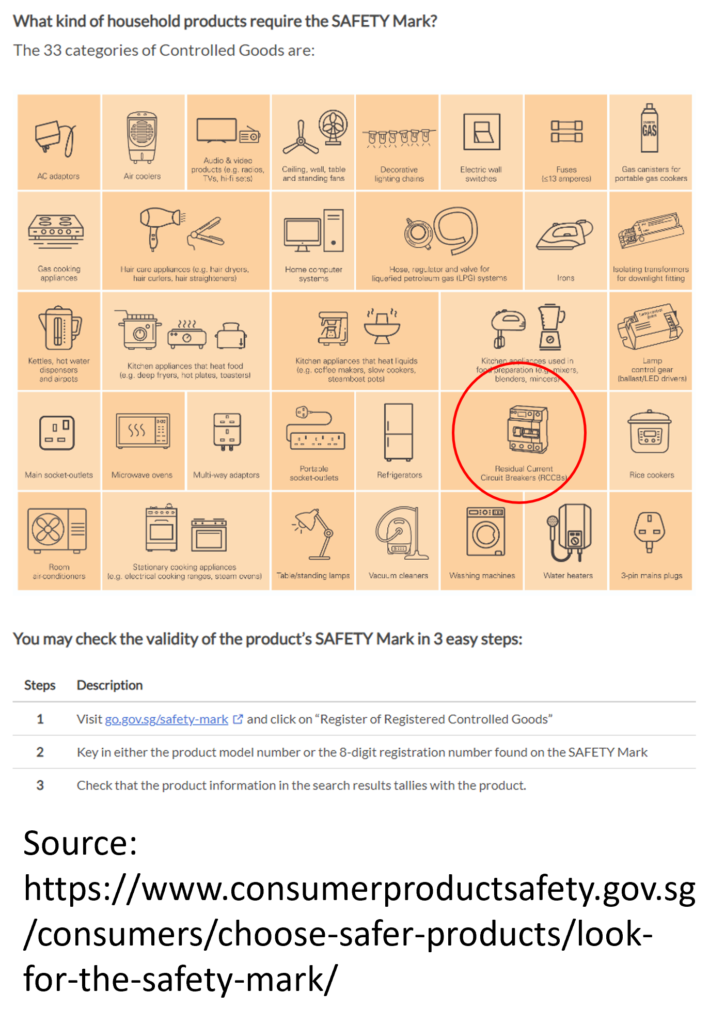
3. 30mA RCCB used in Singapore has a faster tripping time, as compared to the IEC Standard. One can refer to Singapore Standard SS97 (Residual current operated circuit-breakers without integral overcurrent protection for household and similar uses (RCCBs) – General rules) for details.
Note: SS97 covers both Type A and Type AC RCCBs.

4. The RCCB has no overcurrent/overload protection. Hence it is important to ensure that there is a corresponding circuit breaker protecting it against overcurrent/overload. The 30mA RCCB comes in few typical ratings, 25A-40A-63A-80A-100A. One needs to ensure that the RCCB rating is higher or equal to its corresponding circuit breaker. In this example here, the 30mA RCCB is rated 40A, equal to the circuit breaker rating of 40A.
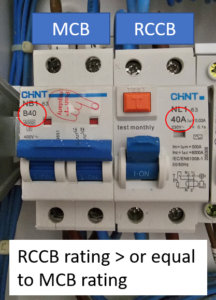
Power Quality Tips for RCCB Selection
The 30mA RCCB is highly sensitive and can lead to cases of maltrip/nuisance trip. An RCCB is designed to trip anywhere above 50% of its sensitivity rating (For the 30mA RCCB, it may trip anywhere above 15mA). Below are couple of tips to follow, if you have been experiencing nuisance RCCB trip(s) with no clear fault/causes found.
1) One should not lump many circuits/appliances to one RCCB. Typically, for a HDB flat, 1 RCCB will suffice. But for larger homes, one may need multiple RCCBs.
The rule of thumb is to limit the standing/background leakage current to 20-25% of the RCCB sensitivity. If this is exceeded, additional RCCB(s) will need to be installed (eg. instead of 1 RCCB serving 10 circuits; re-wire 1 RCCB each to serve 5 circuits; total 2 RCCBs).
Note: Every equipment / appliance contributes a small amount of leakage current (from its mains filter etc).
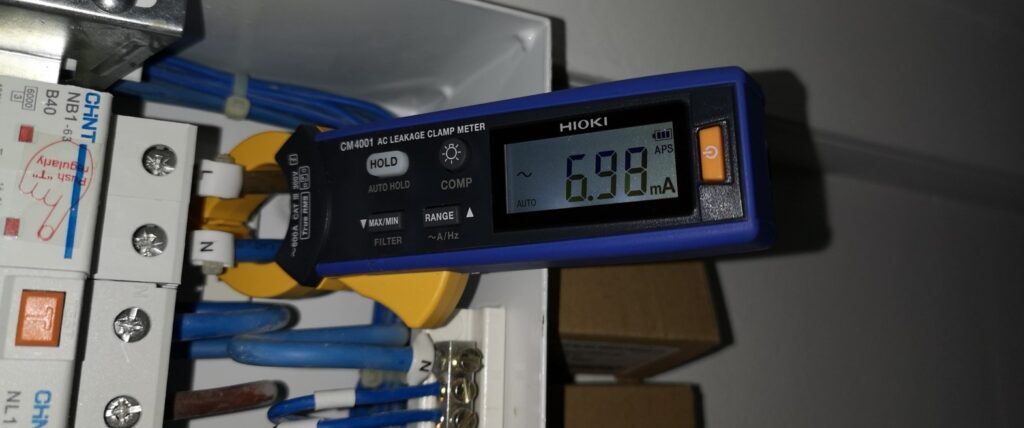
2) The RCCB type should match the load(s) type. A mismatch has been known to cause both maltrip and non-trip cases.
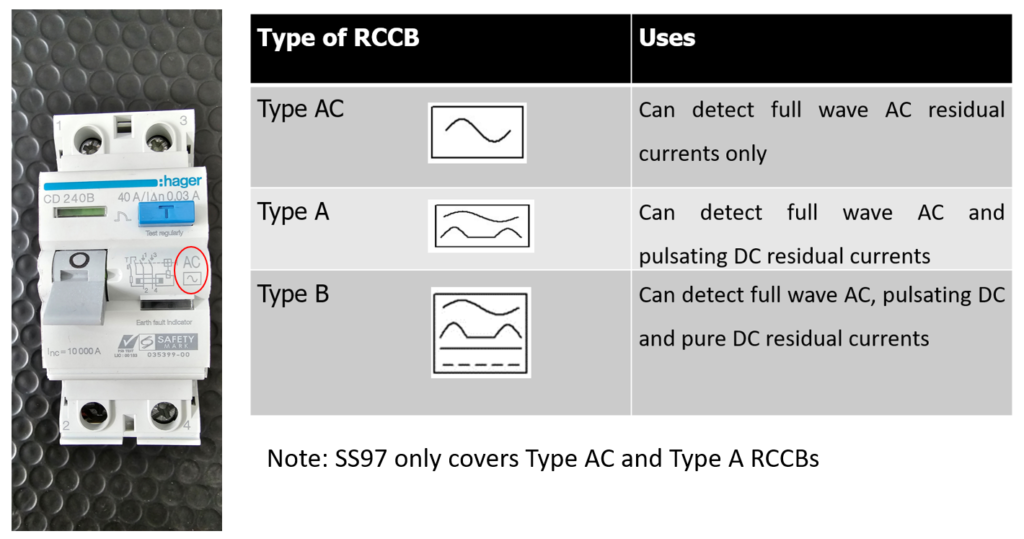
Locally, it is being accepted that for typical residential power and lighting loads, the Type AC RCCB suffices. The price difference between a Type A and Type AC can be as much as 10x. Hence, it is rare to ever find a ‘Type A’ RCCB in homes. The type of RCCB can be differentiated from the ‘waveform logo’ on the RCCB itself, as circled in the photo above.
Loads today however are rarely sinusoidal in shape (as per the AC waveform seen). Here is a voltage/current waveform snapshot of my own home. The current waveform is on the right. It hardly looks sinusoidal.
Note: Some European countries have banned on the general use of Type AC RCCB.
